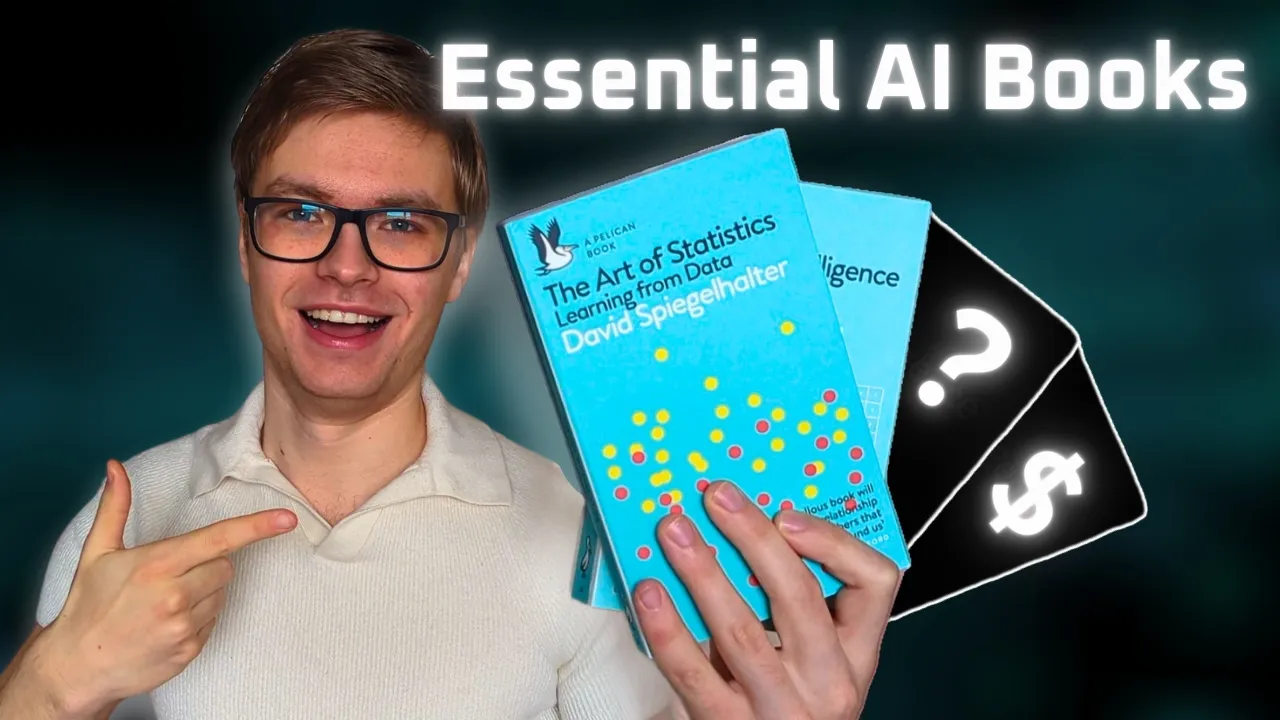Essential Reading That Will Transform Your AI Engineering Journey
Building true expertise in AI engineering requires more than just mastering the latest frameworks or memorizing model parameters. The most effective AI engineers develop a rich conceptual foundation that helps them understand the “why” behind their technical decisions and anticipate how AI systems will behave in the real world. This approach aligns with the comprehensive AI engineer career path from beginner to six figures, where strategic knowledge becomes as valuable as technical implementation skills.
The Value of Pre-Hype AI Understanding
“Artificial Intelligence: A Guide for Thinking Humans” by Melanie Mitchell stands out precisely because it predates the generative AI explosion. This timing advantage means it offers a comprehensive view of AI that isn’t colored by the current focus on large language models.
The book examines multiple AI domains including vision models, speech recognition systems, and game-playing algorithms. This broader perspective helps engineers understand that each AI approach has its own strengths, limitations, and historical context.
Perhaps most valuable is Mitchell’s exploration of AI vulnerabilities. She illustrates how seemingly advanced models can be tricked in unexpected ways - facial recognition systems fooled by special glasses, or image classifiers that identify Arctic animals based on background color rather than actual features. These insights directly parallel today’s challenges with prompt engineering and jailbreaking attempts on language models.
By understanding these fundamental weaknesses in AI systems, engineers can anticipate potential failure modes rather than being surprised by them during deployment.
Statistical Thinking as Your Secret Weapon
“The Art of Statistics: Learning from Data” by David Spiegelhalter provides another crucial mental framework. Statistical literacy transforms how engineers evaluate model performance and interpret results.
The book teaches critical thinking about data grouping and segmentation - skills that prove invaluable when analyzing AI system metrics. Understanding proper sample sizes, statistical significance, and how to avoid misleading correlations helps engineers design more reliable evaluation frameworks.
Even when working with generative AI systems that seem to operate like black boxes, statistical principles enable engineers to determine whether systems are actually performing as expected, and to design tests that reveal true performance characteristics.
Balancing Philosophical Context with Practical Application
Nick Bostrom’s “Superintelligence” introduces important philosophical dimensions to AI engineering work. While less directly applicable to daily tasks, this perspective helps engineers contextualize their work within broader societal developments.
The book encourages thinking about the nature of intelligence itself and how AI might evolve over time. These considerations inform how engineers approach model development, safety guardrails, and ethical implementations.
This philosophical foundation helps practitioners see beyond immediate technical challenges to consider long-term impacts and potential trajectories of AI development - crucial for making responsible engineering decisions.
Enduring Architectural Patterns
The fourth essential knowledge domain comes from books about specific AI architectures with lasting power. For instance, literature on Retrieval-Augmented Generation (RAG) systems provides engineers with conceptual frameworks that will maintain relevance far beyond current implementation methods.
Understanding these architectural patterns - the problems they solve, their core components, and their inherent tradeoffs - equips engineers to design systems that can evolve with advancing technology rather than requiring complete rebuilds.
These high-value concepts transcend specific frameworks or tools, providing engineers with mental models they can apply across multiple generations of AI technology.
The Synergy of Multiple Knowledge Domains
What makes these books collectively powerful is how they complement each other. Historical and cross-domain AI knowledge provides context, statistical understanding enables critical evaluation, philosophical perspectives guide ethical decision-making, and architectural patterns inform system design.
Engineers who develop expertise across these domains can anticipate model behaviors, design more robust evaluation strategies, and create systems with greater longevity and ethical consideration than those focused solely on implementation details.
Additionally, community learning amplifies these benefits. Discussing these concepts with peers helps solidify understanding and reveals new applications and perspectives that might not emerge from solitary study. This collaborative approach is why understanding AI engineering community benefits becomes crucial for accelerated learning and professional development.
Beyond the Technical Tutorial
While tutorials and implementation guides remain valuable, these foundational texts cultivate the strategic thinking that separates exceptional AI engineers from mere implementers. They develop the mental models that inform not just how to build AI systems, but which systems to build and why.
To see exactly how to implement these concepts in practice, watch the full video tutorial on YouTube. I walk through each book in detail and show you the technical aspects not covered in this post. If you’re interested in learning more about AI engineering, join the AI Engineering community where we share insights, resources, and support for your journey. Turn AI from a threat into your biggest career advantage!

